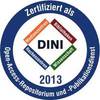In: Radiation Oncology, 12 (2017), Nr. 208. S. 1-8. ISSN 1748-717X
Vorschau |
PDF, Englisch
Download (1MB) | Lizenz:  Creative Commons Namensnennung 4.0 Creative Commons Namensnennung 4.0
|
Abstract
Background: Hypoxia-induced radioresistance constitutes a major obstacle for a curative treatment of cancer. The aim of this study was to investigate effects of photon and carbon ion irradiation in combination with inhibitors of DNA-Damage Response (DDR) on tumor cell radiosensitivity under hypoxic conditions.
Methods: Human non-small cell lung cancer (NSCLC) models, A549 and H1437, were irradiated with dose series of photon and carbon ions under hypoxia (1% O2) vs. normoxic conditions (21% O2). Clonogenic survival was studied after dual combinations of radiotherapy with inhibitors of DNA-dependent Protein Kinase (DNAPKi, M3814) and ATM serine/threonine kinase (ATMi).
Results: The OER at 30% survival for photon irradiation of A549 cells was 1.4. The maximal oxygen effect measured as survival ratio was 2.34 at 8 Gy photon irradiation of A549 cells. In contrast, no significant oxygen effect was found after carbon ion irradiation. Accordingly, the relative effect of 6 Gy carbon ions was determined as 3.8 under normoxia and. 4.11 under hypoxia. ATM and DNA-PK inhibitors dose dependently sensitized tumor cells for both radiation qualities. For 100 nM DNAPKi the survival ratio at 4 Gy more than doubled from 1.59 under normoxia to 3.3 under hypoxia revealing a strong radiosensitizing effect under hypoxic conditions. In contrast, this ratio only moderately increased after photon irradiation and ATMi under hypoxia. The most effective treatment was combined carbon ion irradiation and DNA damage repair inhibition.
Conclusions: Carbon ions efficiently eradicate hypoxic tumor cells. Both, ATMi and DNAPKi elicit radiosensitizing effects. DNAPKi preferentially sensitizes hypoxic cells to radiotherapy.
| Dokumententyp: | Artikel |
|---|---|
| Titel der Zeitschrift: | Radiation Oncology |
| Band: | 12 |
| Nummer: | 208 |
| Verlag: | BioMed Central |
| Ort der Veröffentlichung: | London |
| Erstellungsdatum: | 27 Apr. 2018 12:35 |
| Erscheinungsjahr: | 2017 |
| ISSN: | 1748-717X |
| Seitenbereich: | S. 1-8 |
| Institute/Einrichtungen: | Zentrale und Sonstige Einrichtungen > Deutsches Krebsforschungszentrum
Medizinische Fakultät Heidelberg und Uniklinikum > Radiologische Universitätsklinik Medizinische Fakultät Heidelberg und Uniklinikum > Heidelberger Ionenstrahltherapiezentrum (HIT) |
| DDC-Sachgruppe: | 610 Medizin |









